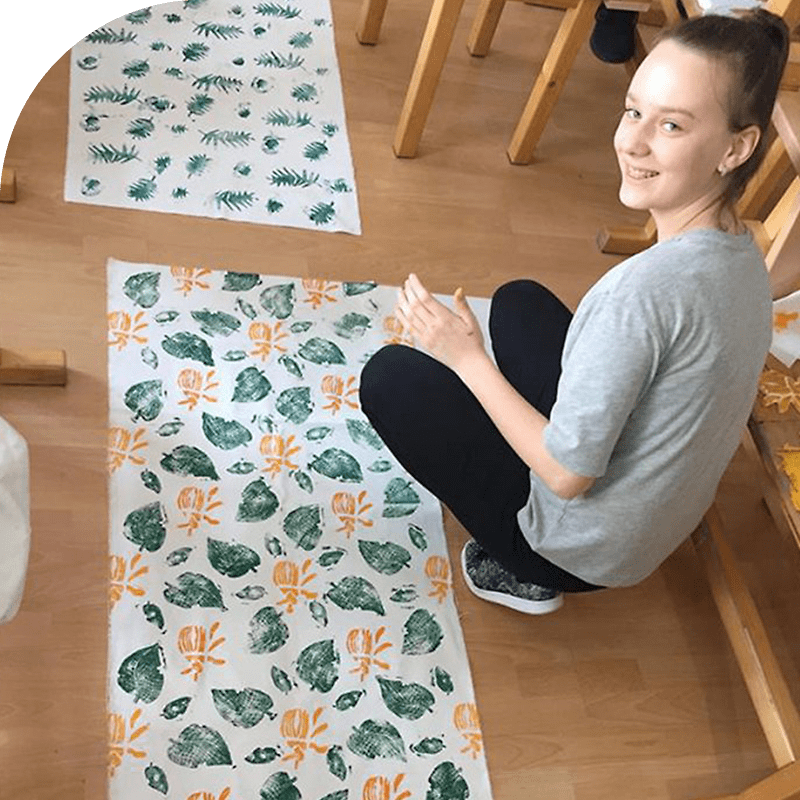When introduced to the textile medium, students first learn to distinguish the type of material. They then discover the possibilities of processing textiles in different textile techniques, especially batik (Indonesian technique) and different types of sewing.
Students gain their first experience in painting on textiles, on batik. Later, we explore the volumes of felt and sponge by shaping by tying, shaping by wrapping with cords, yarns and ribbons of different qualities.
Students also learn to perceive the properties of materials such as strength and elasticity, and further recognize and explore the effects of material texture such as gloss, mattness, smooth and embossed materials.
Having gained this experience, students can begin to learn the sequence of the more complex process involved in working on sewn tapestry and soft sculpture. From design to actual realisation, they progress through the selection of appropriate materials using a variety of processing techniques.

Sewing:
hand sewing
machine sewing
embroidery
appliqué
needlework
Batiks:
bleach batik
wax batik
folded batik
sewn batik
Other procedures:
sewn tapestries
soft sculpture